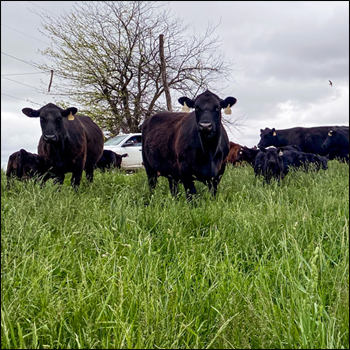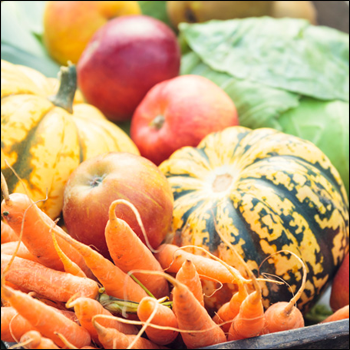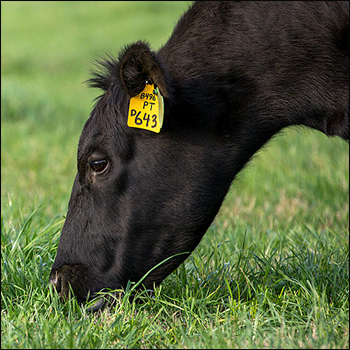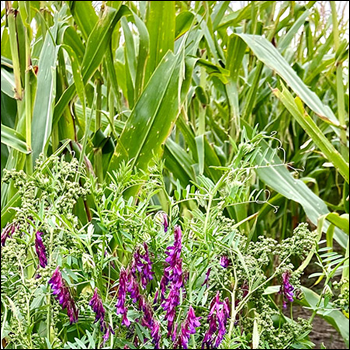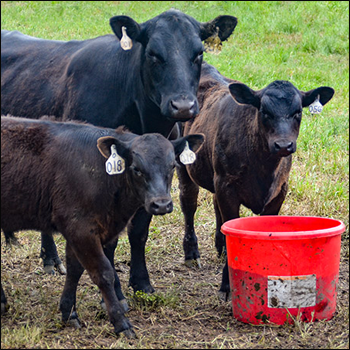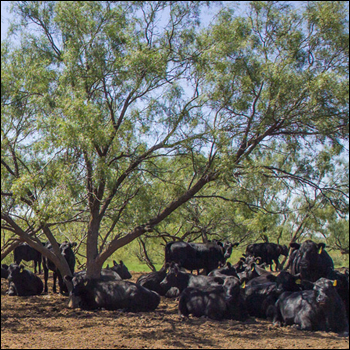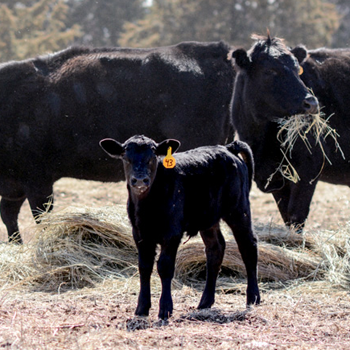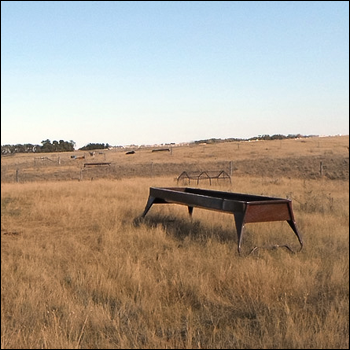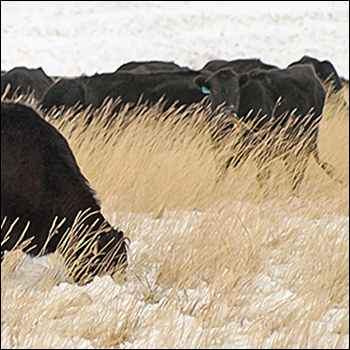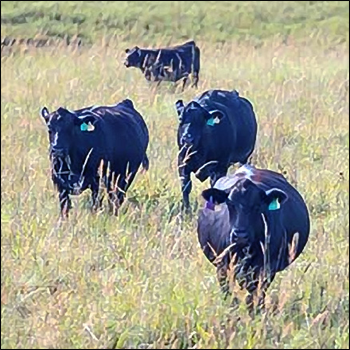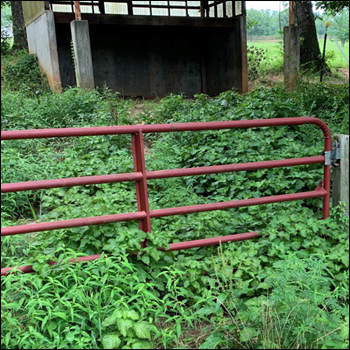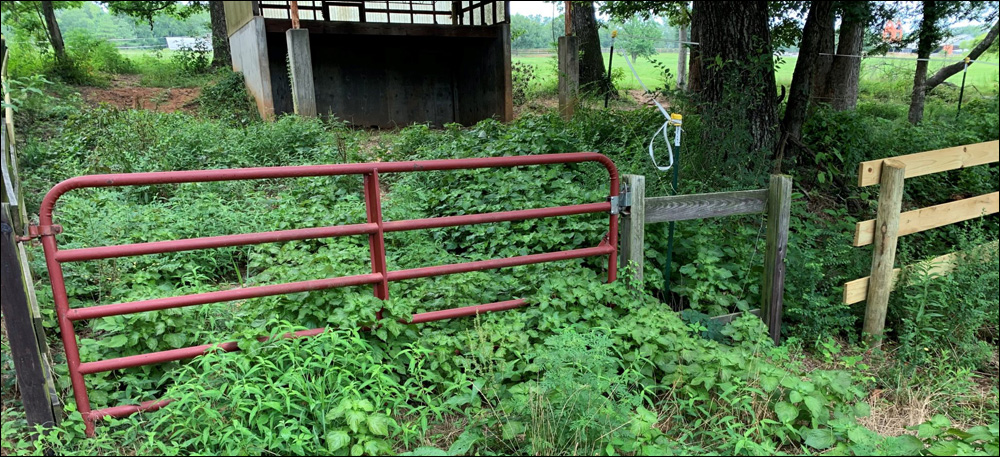
Perilla Mint: A Toxic Threat to Livestock
Learn to identify the toxic weed that causes deadly atypical interstitial pneumonia.
Perilla mint is highly toxic when consumed by cattle, other ruminants and horses. The entirety of the plant is toxic, with the flowering structures being especially potent. Perilla mint is more likely to be consumed in the fall, because of a seasonal decrease in forage availability, but is still a threat in the spring and summer.
|
Fig. 1: Overhead view of a perilla mint plant. 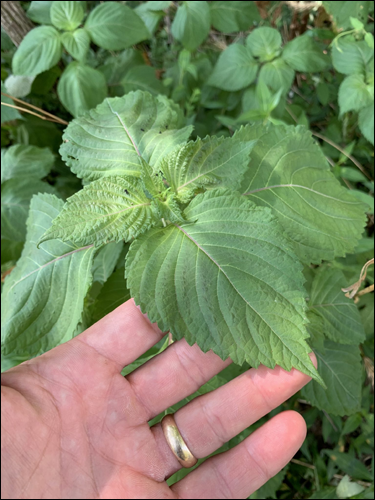
|
|
Fig. 2: Underneath view of a perilla mint leaf, showing the purple coloring. 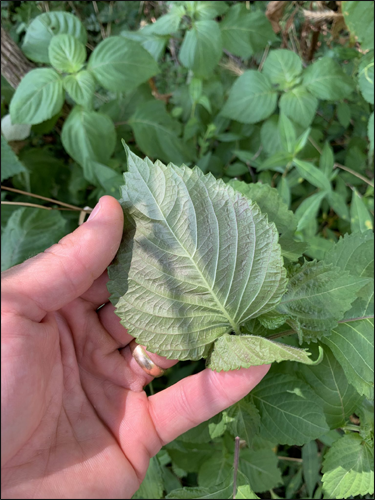
|
Perilla mint (Perilla frutescens) — also known as beefsteak plant or Chinese basil — is an annual, broadleaf weed originally from eastern Asia. Plants commonly reach an average height of 2 feet and can be identified by their coarsely serrated leaf edges, which occur opposite each other along a square stem (see Fig. 1). Perilla mint produces flower spikes that are approximately 6 inches long and contain many small white or purple flowers. Flowers often appear between July to September. Plants can be most easily identified by their purplish color on the undersides of leaves (see Fig. 2) and their minty aroma when the leaves are crushed. Additionally, perilla mint is recognizable in winter months from dormant carcasses, which is also indicative of where future populations will likely emerge the following spring.
|
Fig. 3: Perilla mint in a semi-shaded area. 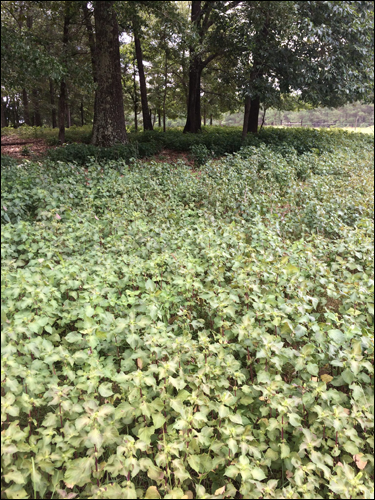
|
|
Fig. 4: Perilla mint in an open pasture area. 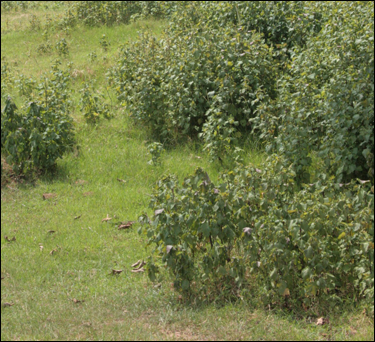
|
|
Fig. 5: Perilla mint in disturbed, heavy-traffic area. 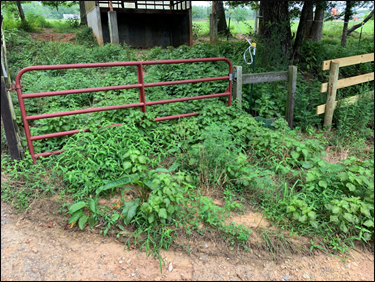
|
This non-native species has a history in culinary, ornamental and medicinal markets. Perilla mint has escaped cultivation and is highly adaptable in the Southeastern climate. The plants are often found in shaded or semi-shaded woodland understories and along fencelines, streams, and natural areas, including pastures and hayfields (see Figs. 3 and 4). Populations are frequently found in disturbed, fertile areas around hay rings, feedlots and barns (see Fig. 5).
Threat
Perilla ketones are one of several volatile compounds found within the plant that cause atypical interstitial pneumonia (AIP) in cattle and other domestic animals when ingested. Fluid accumulates in the animals’ lungs, causing reduced oxygen levels and shortness of breath. Depending on the amount consumed and/or animal susceptibility, death may occur within a couple days or in as little as a few hours.
Little is known about the amount of perilla mint needed to cause detrimental effects in livestock, or about the factors that make some cattle more susceptible to its toxicity than others. Nonetheless, plants are generally more toxic as they enter the reproductive phase of growth, which also coincides with periods of lower forage quality and quantity, as well as increasing temperatures. Consequently, it is during this time that livestock often congregate in shaded areas that may be infested with perilla mint, putting animals at a greater risk of consumption.
Control
Several herbicides are effective in controlling perilla mint. Preemergent options include herbicide active ingredients such as aminopyralid, dicamba, imazapic and picloram (see Table 1). These treatments should be applied prior to seed germination, which can occur as early as late April, depending on latitude or when soil temperatures are between 68°F and 77°F. For each of these preemergent options, rain is necessary following application to move herbicides into the soil.
| Trade Name | Active Ingredient | Use Rates (fl. oz. per acre) |
|---|---|---|
| GrazonTM | picloram + 2,4-D | 32 |
| GrazonNext® | aminopyralid + 2,4-D | 19 |
| WeedMaster® | dicamba + 2,4-D | 32 |
| Plateau® | imazapic | 6 |
Postemergent herbicide choices include 2,4-D, aminopyralid, dicamba, glyphosate and picloram (see Table 2). These treatment selections should be applied to emerged plants from seedling stage through the early reproductive stage for effective control. If opting for the use of postemergence herbicides, grazing livestock should be removed from the treated area until the plants are fully controlled to reduce the risk of consumption.
| Trade Name | Active Ingredient | Use Rates (fl. oz. per acre) |
|---|---|---|
| Grazon P+D | picloram + 2,4-D | 16 |
| GrazonNext HL | aminopyralid + 2,4-D | 19 |
| Roundup® | (41% a.i.) glyphosate | 24 |
| WeedMaster | dicamba + 2,4-D | 16 |
| WeedMaster | 2,4-D | 32 |
Other control options include hand-pulling or mowing, but these methods should be done prior to seed production. Since perilla mint is a prolific seed producer, growers are encouraged to be diligent in control practices as plants will likely occur in subsequent years from single populations. When using herbicides for control, be aware of any desirable species that may be nearby, and always read and follow all label recommendations.
Listen to the Angus At Work podcast episode on the dangers of perilla mint and how you can manage against toxic weeds and forages.
Editor’s note: David Russell is an assistant extension professor in Crop, Soil and Environmental Sciences for Alabama Cooperative Extension Service.

Angus Proud
In this Angus Proud series, Editorial Intern Jessica Wesson provides insights into how producers across the country use Angus genetics in their respective environments.
 Angus Proud: Scott Sproul
Angus Proud: Scott Sproul
Oklahoma operation learned wisdom of moving calving season to better suit their marketing needs.
 Angus Proud: Bubba Crosby
Angus Proud: Bubba Crosby
Fall-calving Georgia herd uses quality and co-ops to market calves.
 Angus Proud: Jim Moore
Angus Proud: Jim Moore
Arkansas operation retains ownership through feeding and values carcass data.
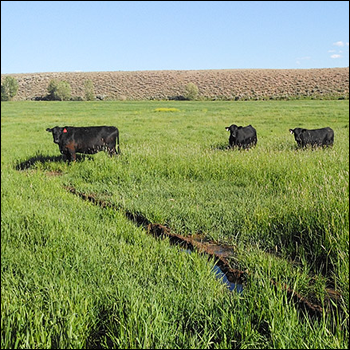 Angus Proud: Stephen Shiner
Angus Proud: Stephen Shiner
Idaho operation rotates pastures in summer and raises crops for winter.
 Angus Proud: Les Shaw
Angus Proud: Les Shaw
South Dakota operation manages winter with preparation and bull selection.
 Angus Proud: Jeremy Stevens
Angus Proud: Jeremy Stevens
Nebraska operation is self-sufficient for feedstuffs despite sandy soil.
 Angus Proud: Dave Rutan
Angus Proud: Dave Rutan
Angus breeder gets the most out of his bull investment by partnering with opposite calving-season operation.
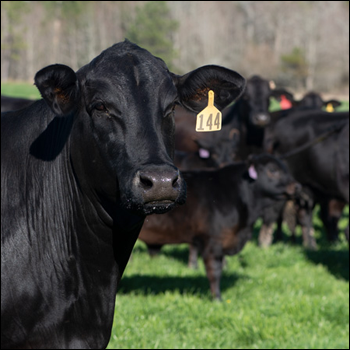 Angus Proud: Nickey Smith
Angus Proud: Nickey Smith
AngusLink helps Louisiana cattleman gain more for his calves.
